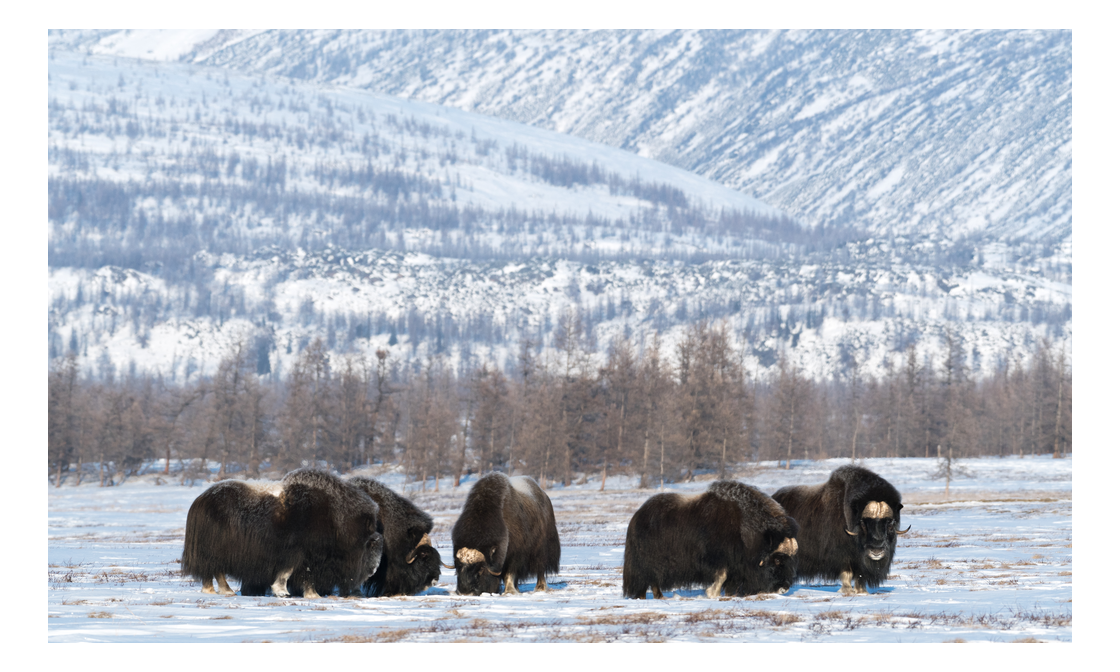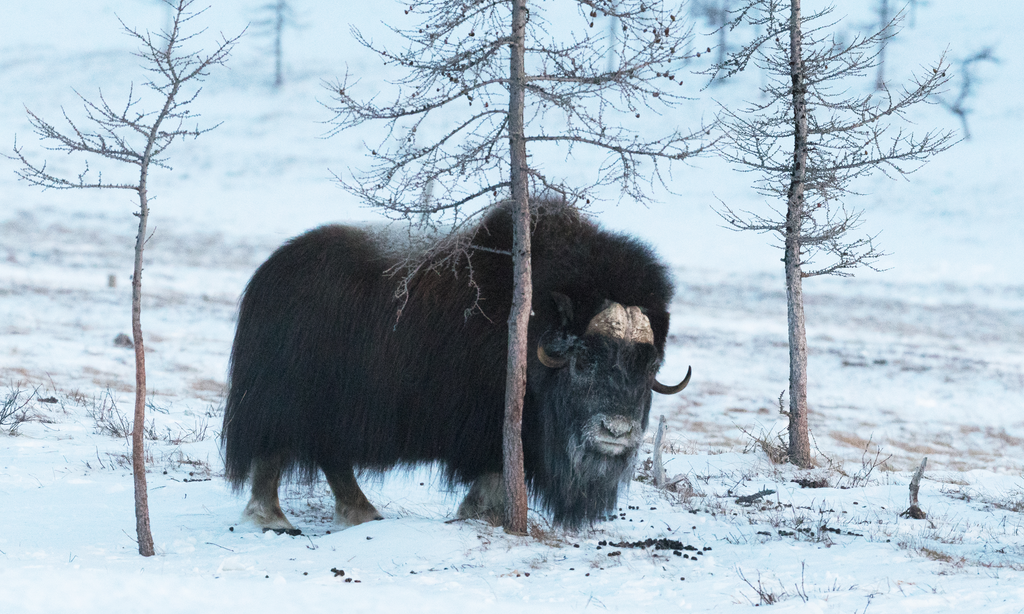
Photo by Svetlana Gorbatykh
In December last year, employees of the Biological Resources Protection Service of the YNAO released 15 musk oxen into their natural habitat. Now scientists from the A.N. Severtsov Institute of Ecology and Evolution RAS (IEE RAS) arrived on site. For the first time, three released animals were fitted with special collars with a GPS sensor. With their help, the movements of the musk oxen will be tracked, as well as the seasonal habitats of animals and their migration routes.
"Tagging of animals for observation and study of them has been used for more than 100 years, this allows us to assess the characteristics of the migration of a tagged individual. This work is important because the study of musk oxen is one of the most important tasks in the conservation of unique animal species," said Candidate of Biological Sciences, Senior Researcher Taras Sipko, researcher at IEE RAS.

Photo by Svetlana Gorbatykh
Specialists of the A.N. Severtsov Institute of Ecology and Evolution RAS plan to continue studying the current state of the musk ox in the Ural region. The second phase of the study will begin in the summer-autumn period. The work includes genetic research and a total aerial survey of animals on the territory of the autonomous region and the adjacent mountainous part of the Komi Republic.
Recall that at the end of 2021, the second release of musk oxen took place from the Gornokhadatinsky section of the Polar Urals Natural Park. In 2016, 65 individuals were released into the wild.
Materials on the topic:
Север Пресс: "На ямальских овцебыков впервые надели спутниковые ошейники"
ФАН: "Ученые на Ямале надели на овцебыков ошейники с GPS-датчиком"
GoArctic: "Овцебыков на Полярном Урале окольцевали спутниковыми ошейниками"
